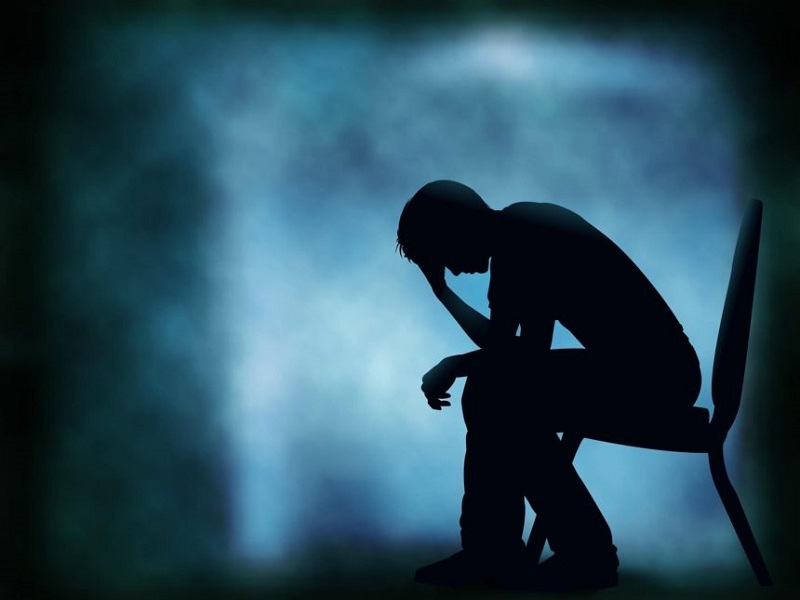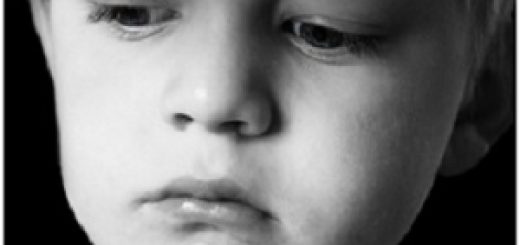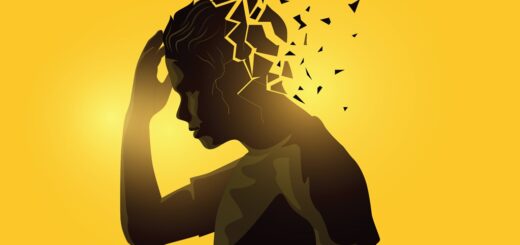What is crippling depression?
When depressive disorders prevent the performance of daily activities, it is called paralyzing depression. What are your symptoms? How to deal with it? In this space we detail it.
Paralyzing depression refers to an intense depressive state that causes people to have significant difficulty initiating any activity. Specifically, it leads to a state of isolation and discouragement that interferes in all areas of life.
Of course, it is normal to experience sadness and negative feelings in many situations; this does not mean that it is a disorder. However, when symptoms last for a long time, it is necessary to establish a clinical diagnosis to intervene in a timely manner.
What is crippling depression?
The term “crippling depression” is not in diagnostic manuals. Still, it is often included in the area of mental health. It is adopted to refer to a severe episode of clinical depression, characterized by a state of intense anguish that, in turn, is the product of alterations at the neurological level.
In this framework, it can be established that there is a depressive disorder when people fail to improve their mood, even if their living conditions are adequate. To understand it better, it is necessary to know the neurotransmitters responsible for regulating mood in the brain. We detail them below.
Serotonin. This neurotransmitter is responsible for producing states of well-being in the body. Therefore, when this substance is lacking, people are unable to feel good.
Norepinephrine. This brain chemical promotes attention, which is beneficial in countering depressive thoughts. When there is a shortage of this substance in the brain, depressive states are prolonged over time.
Dopamine. It is known as the neurotransmitter of happiness. It produces states of pleasure and motivates people to repeat pleasant behaviors. When the brain does not produce enough of this chemical, a lack of enthusiasm for any activity ensues.
GABA. The gamma-aminobutyric acid is one of the neurotransmitters that most contributes to emotional well-being. This brain chemical is responsible for producing calm and relaxation. If people are not very tolerant of frustration, it is possible that the levels of this brain chemical are low.
Symptoms of crippling depression
Common symptoms of crippling depression range from constant feelings of discomfort to the inability to make decisions. Oftentimes, people feel that something is not worth doing because everything they do will end up going wrong.
In addition to the organic component that must be present in clinical depression, there is an emotional factor. Depressive symptoms are usually comorbid with other disorders. For example, they appear simultaneously with the thought patterns of anxiety.
In any case, it must be borne in mind that these symptoms appear with different levels of intensity; therefore, if they do not stop after a while, it is important to see a mental health professional for help.
The characteristic symptoms of crippling depression are as follows:
Vacuum sensation. Many times, this symptom is reflected through isolation. People seek to reduce contact with their environment because they think they have nothing useful to contribute to their interpersonal relationships.
Anxious thoughts. Anxiety is a common symptom in depression. In this case, it is catastrophic thoughts or images that invasively reach the person’s mind.
Loss of interest. During the depression, there is a general loss of interest. However, this situation is notorious in the activities that used to provide satisfaction to the affected person.
Poor tolerance. As depression progresses, patients become less tolerant of stressful situations. That is, the coping styles become maladaptive. For example, stop going to work so as not to deal with work stress.
Lack of concentration. When intrusive thoughts become more and more frequent and intense, the person begins to present complications to be able to concentrate on their daily activities.
How is depression diagnosed?
To make an accurate diagnosis, the criteria of the Diagnostic and Statistical Manual of Mental Disorders (DSM-5) must be taken into account. In particular, it is necessary for the person to experience the aforementioned symptoms, in a period of two or more weeks, continuously.
It should be clarified that it is not necessary that all the symptoms exist. This disorder progresses gradually and its first manifestations are mild. Therefore, the diagnosis is usually made when there are 3 or more symptoms persistently.
During the clinical interview, information is also sought from relatives and close friends. Likewise, it is possible to carry out questionnaires or support tests to determine the type of depression.
Possible treatments for crippling depression
Right now there are a wide variety of treatment options for dealing with depressive disorders. It is essential to have professional psychological support to receive the most appropriate therapy according to the case. In the following space, we detail several alternatives.
1. Treatment with antidepressants
The antidepressant medications must be prescribed by a psychiatrist after making a constant assessment that the origin of the problem is organic. In general, they are used in case of major depression but accompanied by psychotherapy sessions.
2. Psychotherapeutic treatment
In clinical depression, the psychologist plays a complementary role during the treatment process. Thus, regardless of the controls with the psychiatrist, the psychotherapeutic process is key so that the person can obtain the necessary resources to overcome.
3. Systemic psychotherapy
In systemic therapy, the focus of the sessions is to work on the functioning of a system made up of people. Therefore, when a family member is depressed, it is necessary that the rest of the members learn to support them in the most effective way possible.
What is there to remember about crippling depression?
We speak of paralyzing depression when symptoms prevent daily activities from being carried out. Keep in mind that it can occur at any age, even from childhood. Therefore, it is advisable to watch out for symptoms and seek professional help.
Both the psychologist and the psychiatrist can guide effective treatment. It is necessary to intervene in a timely manner, since it is a disorder that tends to get worse as the days go by.















